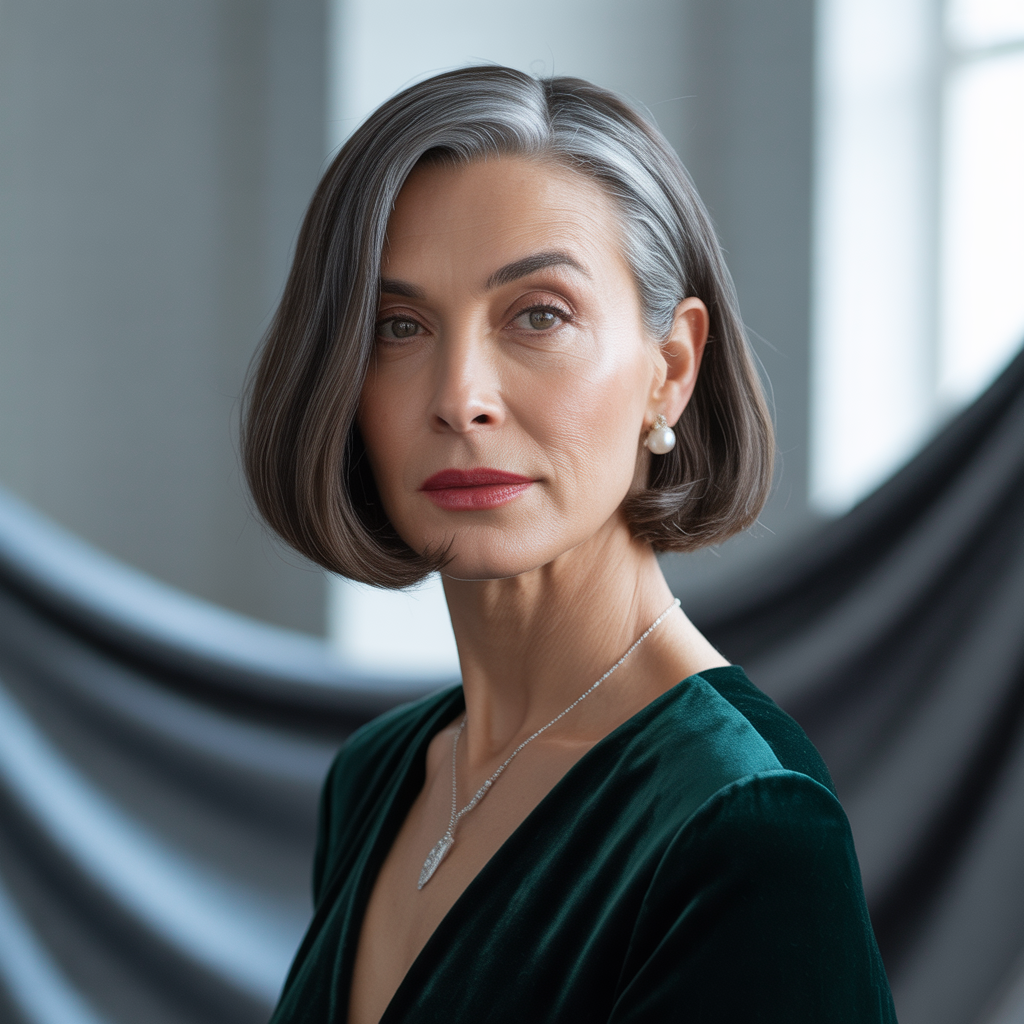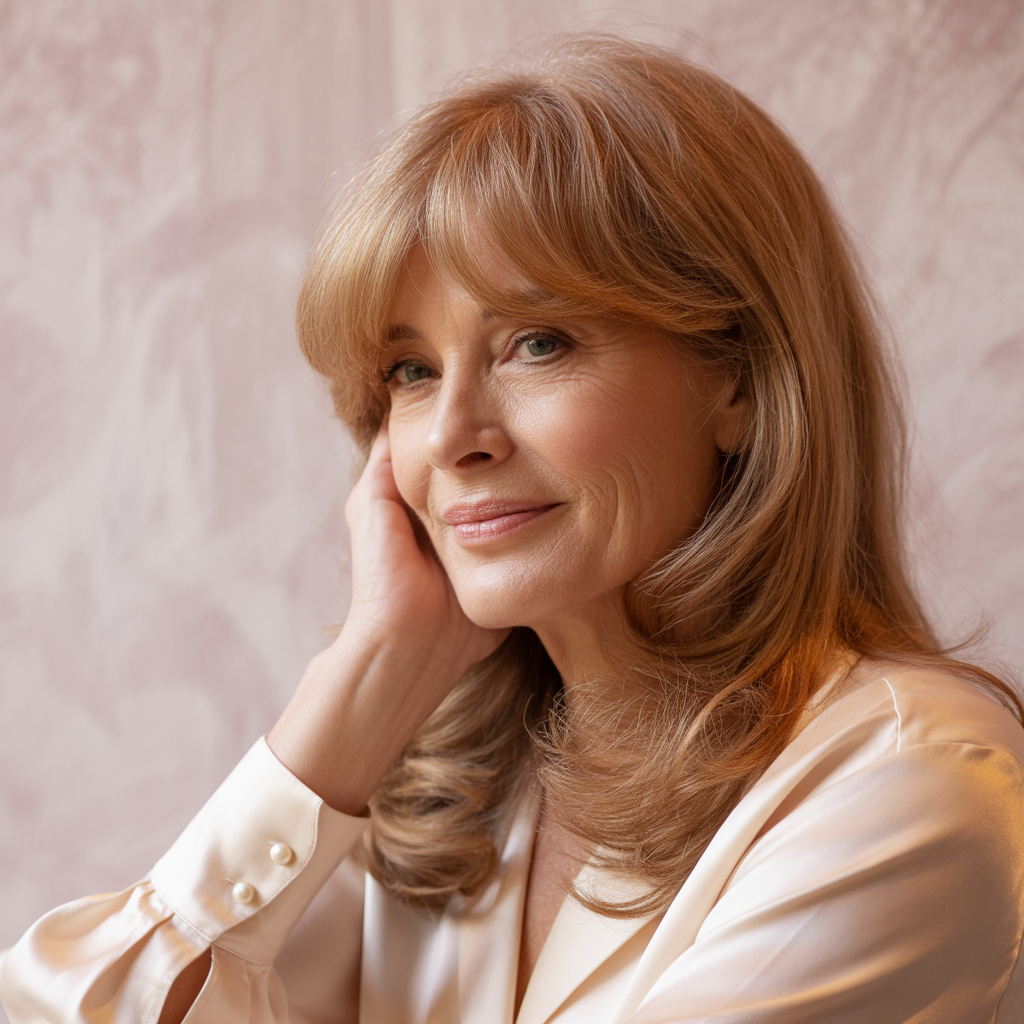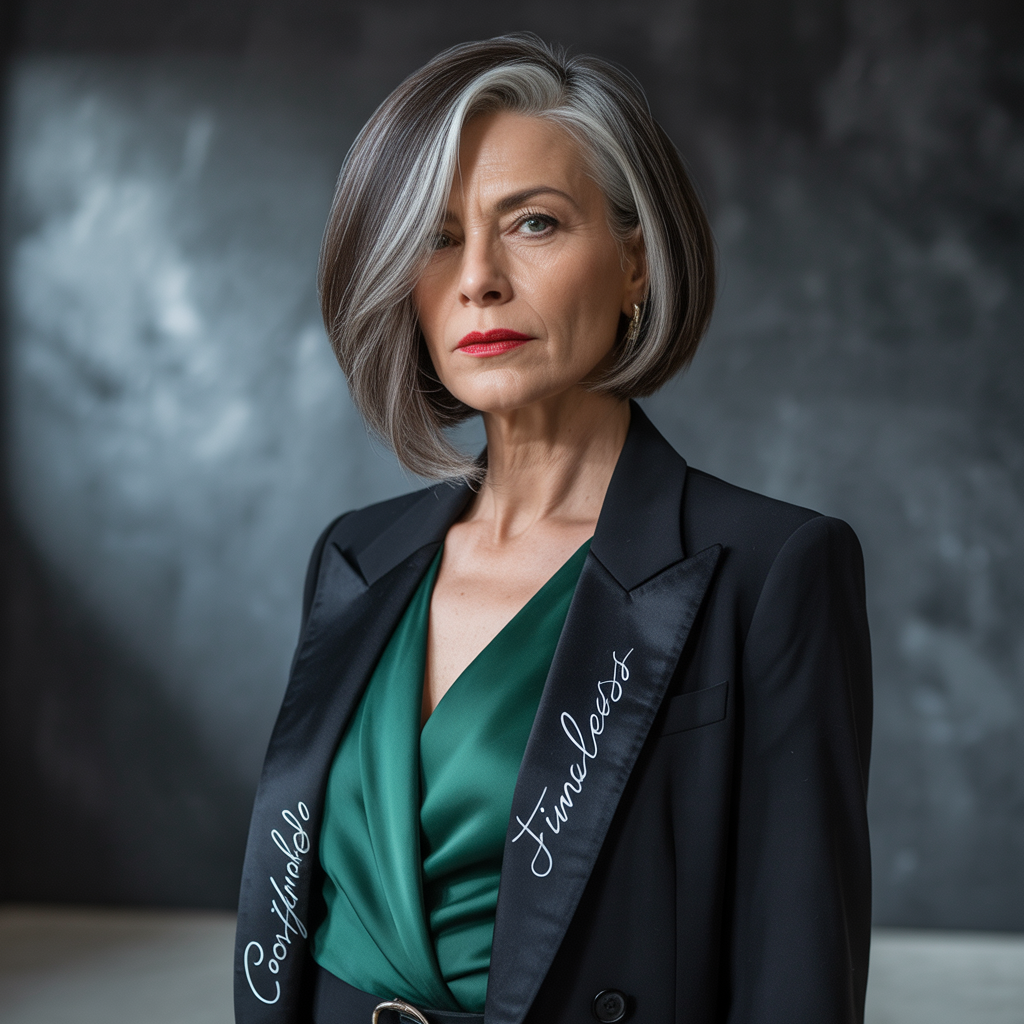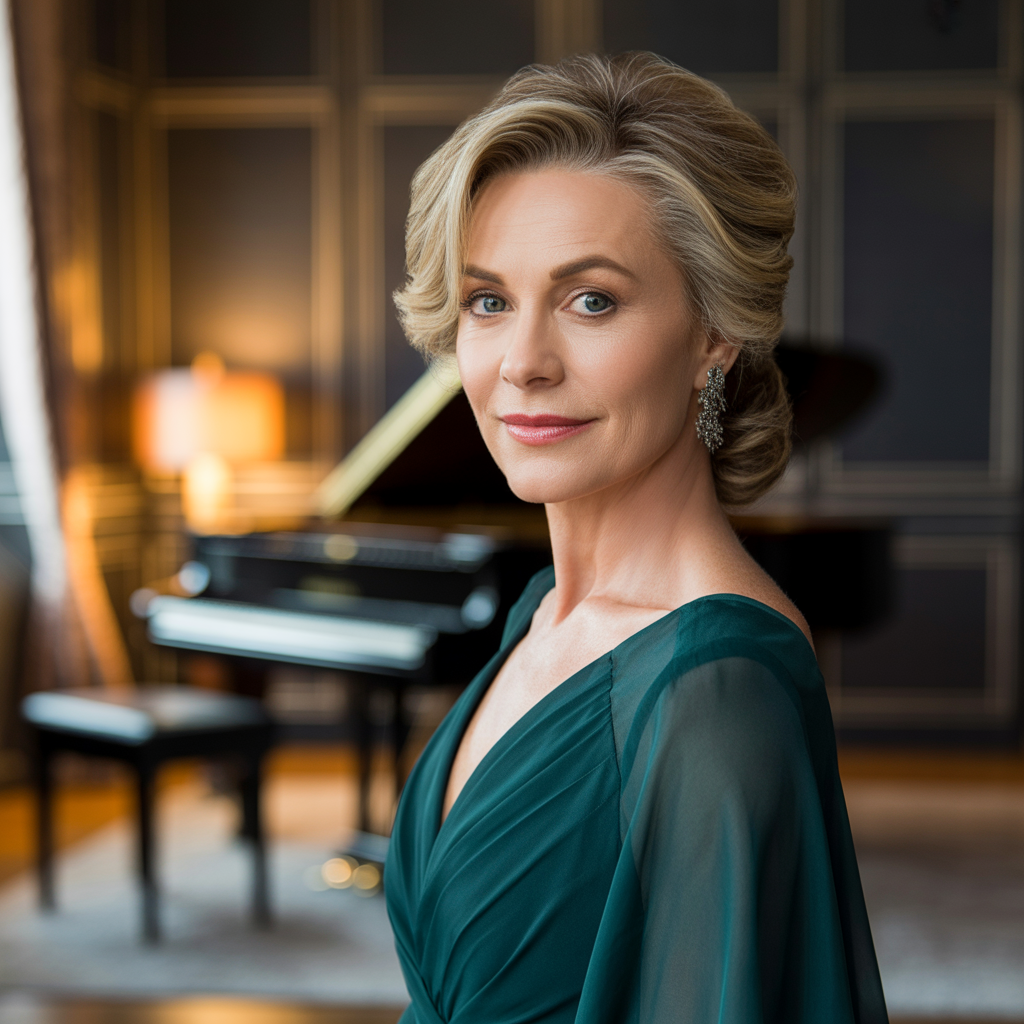Flattering Hairstyles Women Over 60 Will Love
A great hairstyle can refresh your look, boost confidence, and make daily styling faster and more enjoyable. Whether you want low-maintenance cuts, something playful, or a modern polished shape, the right hairstyle enhances facial features and works with changing hair texture. Below are 13 thoughtfully selected ideas for hairstyles women over 60, practical styling tips, maintenance advice, and five realistic FAQs people actually search for when choosing a new look later in life.
Short textured bob with soft layers

Short bobs are a perennial favorite — easy to wash, quick to style, and extremely flattering for thinning hair. Ask your stylist for soft, choppy layers to add movement and disguise reduced density. A slightly stacked back gives lift at the crown, while longer front pieces frame the face. Finish with a lightweight volumizing mousse and a quick blow-dry with a round brush to create shape without stiffness.
Styling tip: Use a small-barrel round brush to push hair away from the face at the roots, creating instant volume without backcombing.
Classic pixie with wispy bangs

The pixie is bold, modern, and ultra-low maintenance. Wispy side-swept bangs soften the forehead and avoid a harsh hairline. This cut works exceptionally well on women with fine hair textures because it creates the illusion of fullness. Regular trims every 4–6 weeks keep the shape crisp.
Styling tip: A tiny bit of cream wax or pomade rubbed in the palms and tousled through ends gives texture and a natural finish.
Shoulder-length layered cut

If you prefer modest length, shoulder-grazing layers are versatile. Layers remove bulk and add shape, which is helpful when hair becomes finer or less dense. This length is easy to style straight, curled, or air-dried for a soft beachy finish.
Maintenance: Deep-conditioning treatments once a week improve texture and shine; a cut every 8–10 weeks preserves the layers.
Long bob (lob) with face-framing layers

The lob is timeless and modern — long enough to pull back but short enough to look fresh. Face-framing layers brighten the complexion and highlight cheekbones. This cut transitions well if you’re experimenting with color or subtle highlights to add dimension.
Styling tip: Use a heat protectant and a large-barrel curling iron to create loose waves that add volume without stiffness.
Soft curls with layered length

For naturally curly or wavy hair, embrace the curl with a layered cut that reduces weight and encourages curl pattern. Layers should be placed to shape around the face and avoid a triangle silhouette. Hydration is essential: use sulfate-free shampoo and a nourishing leave-in conditioner.
Styling tip: Plop damp hair in a cotton T-shirt for 10–15 minutes, then air-dry or diffuse to preserve natural curl shape.
Blunt bob with a tapered nape

A blunt bob with a slightly tapered nape feels modern and polished. The clean line of the bob gives density to the ends (great for fine hair) while the tapered back keeps the silhouette light. This cut is chic whether you wear it sleek or slightly tousled.
Color idea: A soft root-smudge or shadow root helps the regrowth line look natural and reduces frequent salon visits.
Layered shag for movement

A softly layered shag works beautifully to add texture and a youthful bounce. The shag’s face-framing layers and feathered ends distract from thinning at the crown and can be customized to your face shape. It’s a playful option that tolerates air-drying and intentional messiness.
Styling tip: Work a little sea-salt spray into damp hair and scrunch to enhance layers and texture.
Sleek, chin-length bob

A chin-length bob skims the jawline and draws attention to the face. When styled sleek and smooth, it offers a refined, elegant look that suits professional and evening settings. Use a smoothing serum and a flat iron for shine, then finish with a light-hold spray.
Maintenance: A precise trim every 6–8 weeks keeps the line sharp and flattering.
Short curly crop

If you have tight curls, consider a short curly crop that embraces natural shape. Cutting curls in their dry state often yields the best, customized result — ask your stylist about this technique. A short crop can be liberating, low-heat, and easy to manage.
Product pick: A curl-defining cream plus a weekly deep-mask keeps curls springy and healthy.
Long layers with soft side bangs

For women who prefer to keep length, long layers with soft side bangs add contemporary softness. Side bangs are forgiving and can be swept away when you want more openness around the forehead. This look is excellent for balancing mature facial proportions.
Styling tip: When blow-drying, point the nozzle downward for smoother cuticles and a sleeker finish.
Asymmetrical cut for an edge

An asymmetrical bob — slightly longer on one side — provides a modern, fashion-forward silhouette while still being wearable. It adds visual interest and can make the face appear more angled and lifted. Best for those comfortable with a statement look.
Color trick: A few carefully placed highlights or face-brightening lowlights accentuate the asymmetry.
Low-maintenance tapered crop

A tapered crop close to the head with longer top layers is ideal for minimal styling. This cut works well for active lifestyles and those who want a fuss-free routine. A touch of volumizing powder at the roots instantly freshens the style.
Styling tip: Keep a small styling paste at hand to define texture on the crown if hair looks flat midweek.
Elegant updo-friendly mid-length

If you enjoy dressing up, a mid-length cut that can be loosely pinned into soft updos or chignons is a versatile choice. Leave a few face-framing tendrils and ask for layers that won’t bulk when pinned. This is perfect for special events and gives a sophisticated, age-appropriate glamour.
How to prepare: Stretch blondes and greys with a gloss treatment before events to enhance shine and manageability.
Practical considerations when choosing a hairstyle
Choosing the right cut after 60 depends on texture, lifestyle, face shape, and how much time you want to spend styling. Some additional points to consider:
- Texture changes: Hair often becomes drier and finer with age. Incorporate moisturizing products and occasional protein treatments to strengthen strands.
- Face shape: Round faces benefit from length and layers to elongate; angular faces pair well with softer edges and wispy bangs.
- Maintenance: Ask yourself how often you’ll go to the salon. Cuts like pixies and precise bobs need trims every 4–8 weeks; longer styles are more forgiving.
- Color choices: Low-maintenance options include root-smudging, babylights, or embracing silver/grey with a shine-enhancing gloss.
- Health & scalp: If hair loss or scalp conditions appear, consult a dermatologist to rule out medical causes before dramatic changes.
Styling & product recommendations
- Lightweight volumizers (foam or root lifts) add body to fine hair without weighing it down.
- Leave-in conditioners and hair oils (applied sparingly) fight dryness and tame frizz.
- Heat protectant sprays are essential if you use hot tools.
- Texture creams or light waxes provide definition for short cuts without stiffness.
- Weekly hair mask to restore moisture, especially for colored or chemically treated hair.
5 Reality-Based Searching FAQs
How do I choose the best hairstyle at 60+ for thin hair?
Focus on cuts that add volume: layered bobs, textured pixies, and stacked backs. Keep hair shorter to reduce the weight pulling hair down. Use volumizing products at the roots and avoid heavy conditioners that sit on the scalp. Discuss with your stylist about thinning patterns and choose a cut that enhances fullness where needed.
Are bangs a good idea for women over 60?
Bangs can be a flattering choice when tailored to your face and hair texture. Wispy side bangs or curtain bangs soften the forehead and can hide changes in hair density near the front. Avoid heavy, blunt bangs unless you have dense hair and a short maintenance schedule.
How often should I get trims to keep a style looking fresh?
For precise shapes like pixies and blunt bobs: every 4–6 weeks. For medium-length styles and long layers: every 8–12 weeks. Regular trims also remove split ends and keep color-treated hair looking healthy.
Can I color my hair at 60 and still keep it healthy?
Yes — with the right approach. Opt for gentler color techniques like glosses, semi-permanent shades, root smudging, or blended highlights to reduce processing stress. Deep-conditioning treatments and bond-repair products help maintain integrity after coloring. Consider spacing sessions and working with a stylist who understands mature hair.
What daily routine gives the best results for mature hair?
A simple routine works best: gentle shampoo (2–3 times a week if hair is dry), a nourishing conditioner, weekly mask, and a leave-in product for hydration. Minimal heat styling and using protective products when you do use tools will prolong hair health. A good brush and soft towel-drying (or microfiber wrap) reduce breakage.
Conclusion
Choosing a flattering hairstyle after 60 is about balance — matching your personal style, daily routine, and hair’s changing texture. From short, chic pixies and bobs that make mornings simpler, to longer layered looks that preserve versatility, there’s no one “right” choice. Work with a stylist who listens to how you live your life and customizes cuts and color to enhance your natural assets. Prioritize scalp and hair health with hydration and gentle care; the best cut is the one that leaves you feeling confident.
Final Thoughts
Hair at sixty-plus is an opportunity to express a refined or adventurous side — whatever suits you. Small changes like a face-framing layer, softer bangs, or a brightening gloss can create a noticeable uplift. Embrace styles that require the level of maintenance you enjoy, protect hair health with appropriate products, and remember: confidence and comfort are the best accessories to any hairstyle. If you’d like, I can help you pick the top 3 styles from the list based on your hair texture and face shape — tell me your hair type and a photo reference (optional), and I’ll suggest the most flattering cuts and styling steps.







